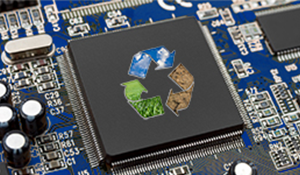Semiconductor manufacturing is changing.
In an industry closely associated with constantly changing products, this is a no-brainer. But something is happening at a more foundational level, and it’s really exciting.
The biggest recent shift has been in working to improve semiconductor manufacturing products through processes that go far beyond the substrate, and scientific computation is at its very core.
What is scientific computing?
“Scientific computing is the collection of tools, techniques and theories required to solve on a computer mathematical problems in Science and Engineering.” —SciComp
More simply put: Computational researchers use scientific computing to do what their experimental counterparts do in a lab.
Scientific computing is present in almost every branch of experimental science, and allows researchers to find the outcome of a reaction without the significant cost. It means the almighty “eureka” moments will happen far more often, and innovation can happen at a much quicker pace.
Trial and error no more
That’s the goal, at least.
Though computational science has been around for several decades, its use in semiconductor manufacturing is brand new. And it’s already showing tremendous promise.
Experimentation in the semiconductor world is critical to its advancement. It can also be extremely expensive. The trial-and-error approach can cost a lot of time, money and material before you find your eureka moment. With powerful scientific computing, however, we can simulate the same experiments with incredible accuracy at a much lower cost and time commitment.
Customers first
This also makes scientific computing a wonderful customer service tool.
Right now, there are some intelligent programs that help customers make a more informed decision. However, scientific computing can take that to the next level. If customers need to adjust a process somewhere in their manufacturing, we can use scientific computing to help them identify exactly what to modify to achieve the desired result before they spend a penny or lift a finger.
Grounds for collaboration
Dr. Amanda Riojas is a Brewer Science computational chemist who plays an integral role on our small but trailblazing computational science team. While she’s passionate about her own field of computational science, she’s intrigued by the prospect of collaborating with others.
“I love figuring out how to fit people together, how to learn from each other and support each other,” said Dr. Riojas.
Everyone on the scientific computing team brings unique expertise. It’s her role to find common ground. As an integrator, she connects with the computational scientists on her team and those around the company to find solutions to some of our most complex questions as well as those of our customers.
What’s next?
It’s unclear what will be possible with the introduction of scientific computation into the semiconductor world, but we do know it will be significant. And while significant challenges still lie ahead, collaboration and customer service are a great place to start.




Subscribe to Our Blog